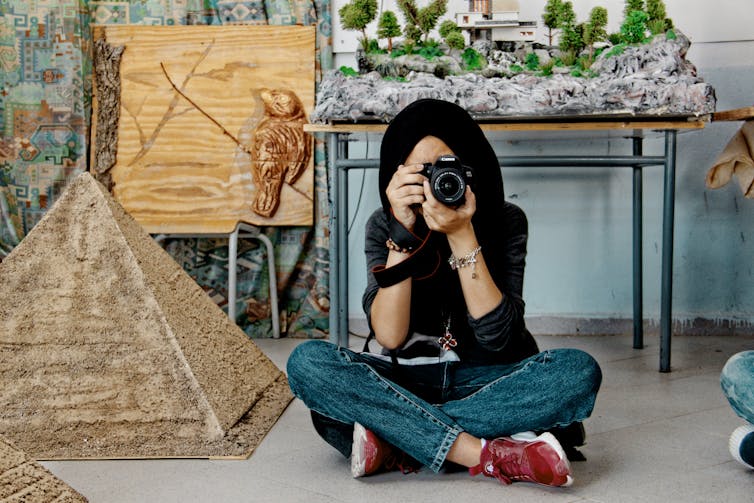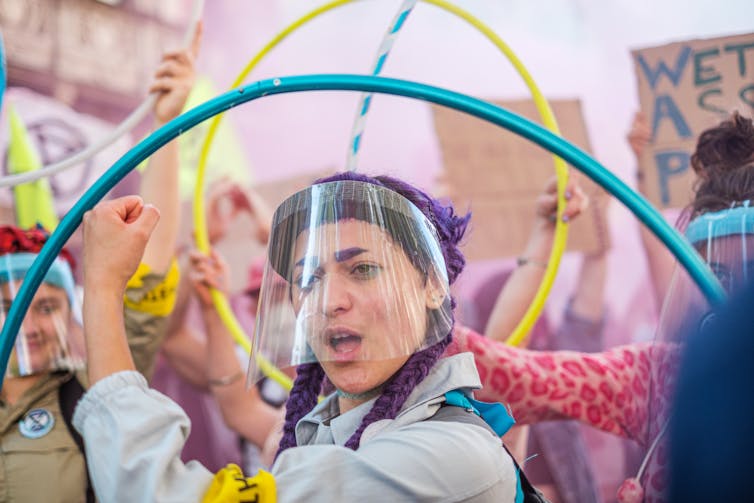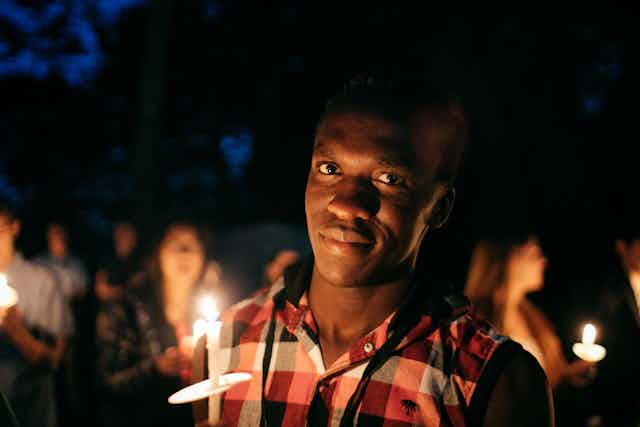All too often, hope is equated to a desire for something fleeting: good results on an exam, the win of a favourite team, the wanted present. Quite whether something so insubstantial can actually be called “hope”, though, is a question that has taken on particular poignancy over the last two years.
After the challenges we’ve collectively – and globally – faced since March 2020, people, and young people in particular, are by all accounts feeling overwhelmed. Many might feel despondent, even hopeless.
Depression and anxiety increased by nearly 10% in the general UK population during the first lockdown with another 7% surge in January 2021. For university students the rise in mental health challenges is even more alarming. The Humen mental health charity has warned that nearly half of the COVID-cohort of students have had their university experience adversely affected by mental health difficulties.


This article is part of Quarter Life, a series about issues affecting those of us in our twenties and thirties. From the challenges of beginning a career and taking care of our mental health, to the excitement of starting a family, adopting a pet or just making friends as an adult. The articles in this series explore the questions and bring answers as we navigate this turbulent period of life.
You may be interested in:
‘Hope’ isn’t mere wishful thinking – it’s a valuable tool we can put to work in a crisis
Five life-affirming words we should bring back into use
Five tips for discussing diversity at work with those who seem dismissive or resistant
Due to isolation and further restrictions, anxiety and depression among university students has indeed risen by 50% above the normal baseline. COVID, of course, is not solely to blame here. The pandemic, along with the climate crisis, has only compounded the harms wrought by racism, misogyny, transphobia and classism, among other ills.
My research explores how hope begins in a place of despair – in the desire to make things better. Too often conceived of as a sentiment, hope is better understood as an action.
How hope is an imperative
One of my favourite poets, Emily Dickinson, wrote the following verse in 1891. It is lovely imagery, but to my mind, too cute and incomplete:
‘Hope’ is the thing with feathers –
That perches in the soul –
And sings the tune without the words –
And never stops – at all –
I find Caitlin Seida’s 2018 revisioning of Dickinson’s words more accurate. In a poem entitled, Hope is Not a Bird, Emily, It’s a Sewer Rat Seida says that hope is not a thing with feathers but “an ugly thing with teeth and claws and patchy fur that’s seen some shit”.
It’s the gritty, nasty little carrier of such diseases as
Optimism, persistence,
Perseverance and joy
This chimes with German theologian Jürgen Moltmann’s definition of hope as a stubborn desire, stemming from difficult times and oppression, to see a better, alternative future.

Much as feminist author bell hooks says of love that it is “a doing”, hope too can be described as a doing. It may be an optimistic feeling, but it is, primarily, an imperative: to persist and persevere.
In 2003, feminist and environmental activist Rebecca Solnit wrote a book entitled Hope in the Dark, about acting even when there is immense uncertainty, but acting nonetheless. As she explained in 2016: “It is important to say what hope is not; it is not the belief that everything was, is or will be fine. The evidence is all around us of tremendous suffering and destruction. The hope I am interested in is about broad perspectives with specific possibilities, ones that invite or demand that we act.”
Such acting cannot be divorced from the collective. Hope is outwardly focused on the community and society. It holds within it a deep sense of responsibility.
As a former dissident against the USSR, Czech playwright Vaclav Havel, in his 1997 book, The Art of the Impossible, underlined our having a “universal sense of responsibility” to our communities and to each other:
Genuine hope is humanity’s profound and essentially archetypal certainty … that our life on this earth is not just random.
Similarly, civil rights activist and Black Lives Matter supporter DeRay McKesson has described how he came by hope through facing down the many threats against his life and safety:
Hope is the belief that our tomorrows can be better than our todays, when we talk about being hopeful for a future in which black bodies are not considered weapons, it is so easy to deride hope as a platitude, or even as an enemy of progress. But hope can also be a driving force.
How learning can be hope-giving
As an educator, I am acutely conscious of how much the lives of students have been fundamentally shaped, and their educational journey, disrupted by the pandemic.

There are ongoing debates about whether students have received a poorer education because of the impact of lockdowns, where students could not meet for class in person, and in some cases, unable to travel to the university. At first glance, it may seem like those enrolled at university between 2020 and 2022 might be mourning the loss of something deeply valuable about their educational experience.
Time at school or university is about academic learning, of course. But it is also, as philosopher Martha Nussbaum points out in her 1997 book, Cultivating Humanity, about building community, figuring out your core values, and making plans for the future.
Young people who have graduated during the pandemic have persevered in the face of immense challenges. They are already navigating issues – from racism to the climate crisis and gender fluidity – that many others are still making sense of. They are here, campaigning, starting, making, doing – learning. This is what hope as action looks like.

